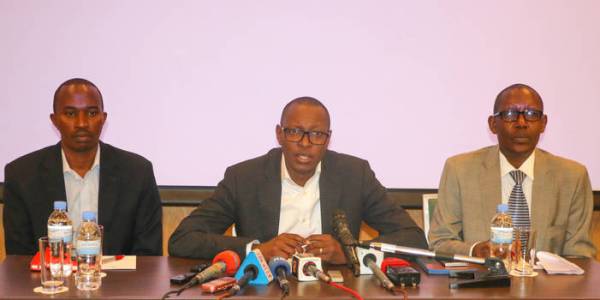
Kigali: Rwanda Utility Regulatory Authority (RURA) has started the process of introducing new and improved road transport reforms in the City of Kigali in an effort to bring efficiency and a sustainable transport system.
The process to shift to ‘Public Transport Generation Two (PT-G2)’ launched this Thursday is part of the national transformation process, and will officially come into force in May next year, running for five years until 2025.
PT-G2 described as a well planned, scheduled and prioritized public transport network, will replace the five-year PT-G1 launched in August 2013, which mainly focused on organising and regulating public transport in the capital.
PT-G1 also replaced PT-G0 (before 2013), when the city was defined by low capacity vehicles with poor accessibility, operating on non-assigned routes, high revenue leakages between vehicle owners and drivers/conductors, and the government; abusive drivers and conductors; long waiting hours; unclean vehicles and unhygienic drivers and conductors.
Under PT-G2, the regulator will introduce vehicle schedule time at every bus station, improved route planning, introduce public transport application for smart-phones to facilitate passengers in their schedules on time when a bus will be at the station; driver duty board, which is filled by the driver on arrival and departure time at every bus station; and an intelligent service monitoring system, which helps the regulator to track buses in line with regard to arrival and departure time at stations.
Others include better vehicle mix, improved service contracts, increasing the commercial speed to influence use public transport rather than use of private means, which cause traffic jam; introduction of drivers’ shifts to prevent stress and accidents caused by long working hours, contracts for drivers to ensure job security, medical insurance and organized salary payment process, all which is aimed at having professional drivers with access to financial loans since they will be having contracts.
This Thursday’s launch of the reforms process marked the official call for fresh interested parties to operate public transport in the City of Kigali, a process which will take two months.
Currently, there are 80 routes in the City of Kigali up from 41 routes in 2013, which are classified in four zones.
RURA’s Director General, Patrick Nyirishema, while speaking, during the press conference, said that PT-G2 comes to implement the city master plan, which requires a transit oriented city, sustainable transport network and comprehensive transport system.
“We have moved a long journey from PT-G0 towards PT-G2 and to PT-G3 (which will start in 2026); we moved from a disorganized transport system where passengers had no right, but we are yet to get where this country wants to be, and we will get there in favorable steps and phases,” Nyirishema said.
He added that under the new public transport generation, passengers will hold transporters and drivers accountable through real time passenger information system, fight traffic jam through prioritized public transport routes, and increase use of public transport and preventing road accidents.
Currently, motorcycles account for the majority 60 percent means of transport in Kigali, private cars account for 34 percent, while public vehicles and cargo trucks account for 3 percent each.
A survey conducted this year indicates that there are 450 fleets in Kigali with the capacity of 18,394 passengers.
According to Nyirishema, the current fleet is enough to accommodate passenger capacity in Kigali, but the commercial speed is affected by the big number of private means of transport, which the new reforms will strive to address.
Generation Two will also look at the transport fare, improve operations monitoring system, public transport operator structure and governance.
Transport schedules will also take into consideration normal and peak hours, weekend and public holidays.
Nyirishema said that the reforms are meant to further ensure reliability and legibility, increase passengers’ satisfaction and improve traffic control. (End)
